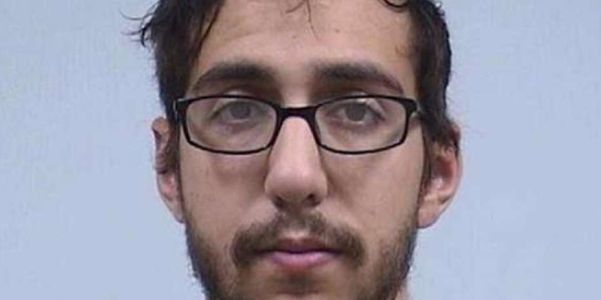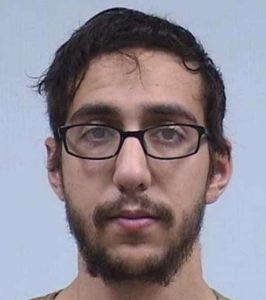
Stabbings of college professor and his wife nets 115 years in prison for murderer Winston Corbett

A 25-year-old Indiana man received the maximum sentence allowable under the law after having been found guilty of the brutal stabbing murder of a college professor in 2011. The college professor’s wife was also stabbed multiple times during that home invasion. She survived the attack – after having been stabbed nearly two dozen times; and she was able to testify at her husband’s murderer’s sentencing.
On December 28 in an Elkhart County, Indiana, courtroom, convicted murderer Winston Corbett was sentenced to 115 years behind bars – 65 years for murder and 50 years for attempted murder. His sentencings will run concurrently.
In 2011, Corbett was only 16 years old when he committed those violent crimes.
In the early morning hours of October 9, 2011, Corbett – then unknown to the authorities – broke into the home of the James and Linda Miller family in Goshen, Indiana, where he viciously attacked them, stabbing each multiple times before pursing the college professor outside and inflicting even more injuries. Mrs. Miller was able to call 911 to summon help, and survived; but Mr. Miller succumbed to his injuries.
During the initial police investigation, crime scene investigators collected and preserved hundreds of pieces of evidence. Although Detectives interviewed dozens of witnesses and pursued hundreds of leads, the investigation went without an identified credible suspect for almost seven years. In 2017, Detective Nick McCloughen, an Officer of the Goshen Police Department assigned to the Elkhart County Homicide Unit, took over the investigation and maintained communication with Mrs. Miller.
After conversations with Mrs. Miller, and training exposure to the investigative concept of genetic genealogy utilized by other law enforcement agencies in the United States, Detective McCloughen pursued genetic genealogy analysis, and the investigation began to take on a new perspective.
Genetic genealogy is a tool that investigators can use to develop possible leads based upon comparing DNA markers obtained from certain evidence at a crime scene, with public genetic genealogy databases. No raw genetic data is shared, or even identified, only the location and amount of DNA on certain genetic markers commonly used for identification in the scientific and law enforcement community. Highly experienced professionals then cross-reference DNA results with other data sources used in traditional genealogy, such as census records, vital records, obituaries, and newspaper articles, to build family trees of possible leads. Further analysis allows researchers and law enforcement professionals to narrow down a pool of possible suspects to a region, a set of families, or even, possibly, to an individual.
Upon receiving a solid lead from the genetic genealogy lab that assisted in the Miller investigation, the Elkhart County Homicide Unit looked deeper into individuals who, at the time, lived within about a mile of the Miller’s home.
By November 2018, formal charges of Murder and Attempted Murder were filed by Prosecuting Attorney Vicki Elaine Becker against Winston E. Corbett, now 26 years of age, from Goshen, Indiana, as the investigation had finally resulted in the identification of the intruder. The case against Corbett was presented to a jury in early November 2020.
As the evidence unfolded, the jury heard from numerous witnesses regarding their observations the night of the attack, the collection of evidence from the scene, and from DNA experts regarding their roles in the analysis of evidence. Out of dozens of samples of blood stains found at the scene, mostly attributed to Mr. and Mrs. Miller, scientists discovered two samples of DNA identified as a mixture of Winston Corbett and Mr. Miller, and a single-source sample located within the home identified as the DNA of Winston Corbett.
Corbett testified on his own behalf, calling the actions of whomever committed the attack “sadistic”, but denying involvement. Corbett’s attorney also called an expert witness who described how he changed the parameters from how the DNA mixtures were originally evaluated by the Indiana State Police scientists and came to different conclusions regarding the mixtures. However, Corbett’s expert did not re-evaluate the single-source sample, instead commenting that the Indiana State Police evaluation of all other samples was reasonable.
After almost two weeks of trial, the jury returned a verdict of guilty on both charges.
On Monday at Corbett’s sentencing, Judge Michael Christofeno handed down the maximum sentence of 65 years on Count I, Murder, and 50 years on Count II, Attempted Murder, for a total of 115 years in prison. Deputy Prosecutor Donald Pitzer argued that Corbett’s use of the word “sadistic,” commonly defined as “taking pleasure from inflicting harm on other people,” was an appropriate word to encompass the heinous acts of the defendant.
The murdered college professor’s widow, his sister and his two daughters testified via video during Monday’s virtual hearing. Linda Miller said her husband’s slaying has left her with “a deep and enduring pain.”
“There are many days that I want to die because I couldn’t stand the pain. There are also many days that I made plans to die because the pain was unbearable. The night we lost Jim, we lost a lot,” she said. ~ ABC News
(Source: Elkhart County Prosecutor’s Office)
~ Posted by: Richard Webster, Ace News Today / Follow Richard on Facebook and Twitter






